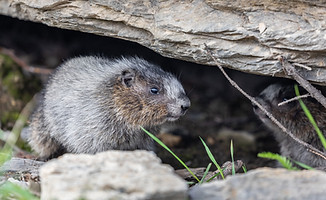

What Are Rodents?
Rodents are mammals belonging to the order Rodentia, the largest order of mammals worldwide. Common rodent pests in New Jersey, Pennsylvania, and Delaware include house mice, deer mice, Norway rats, and roof rats. Their sharp, ever-growing front teeth make them prolific chewers, and their adaptability allows them to thrive in both urban and rural environments.
Are Rodents Harmful?
-
Health Risks: Rodents spread diseases such as hantavirus, leptospirosis, and salmonella through droppings, urine, and direct contact.
-
Food Contamination: A single mouse can contaminate far more food than it consumes.
-
Property Damage: Constant gnawing damages insulation, drywall, wood, and wiring—often leading to fire hazards.
-
Allergens: Droppings and nesting materials can worsen allergies and asthma.
-
Rapid Reproduction: A pair of mice can produce dozens of offspring in a single year, creating full-blown infestations quickly.
Rodents Control
Rodents are difficult to eliminate without professional help due to their rapid breeding and ability to exploit tiny entry points.
-
Inspection: Identify entry points, nests, and food sources.
-
Exclusion: Seal gaps as small as ¼ inch for mice and ½ inch for rats.
-
Sanitation: Reduce clutter, eliminate food sources, and secure garbage.
-
Trapping & Baiting: Use strategically placed traps and tamper-resistant bait stations.
-
Ongoing Protection: Professional monitoring and quarterly services prevent reinfestations.

Types of Rodents in NJ, PA & DE
-
House Mouse: Small, gray-brown, most common indoor rodent pest.
-
Deer Mouse: Brown with white underbelly; known carrier of hantavirus.
-
Norway Rat: Large, burrowing rat common in urban and suburban areas.
-
Roof Rat: Smaller, climbing rat often found in attics, trees, and rooflines.
Rodents Appearance
-
Size: Mice (2–4 inches) vs. rats (7–10 inches).
-
Color: Gray, brown, or black.
-
Tail: Scaly, long, and nearly hairless.
-
Droppings: Small and pellet-shaped (mice) or larger with blunt ends (rats).
Rodents Habitat
-
Indoors: Attics, basements, crawl spaces, wall voids, and kitchens.
-
Outdoors: Burrows, woodpiles, sheds, and sewers.
-
Entry Points: Can squeeze through small cracks, vents, and utility openings.
Rodents Diet
-
Rodents are opportunistic feeders and eat:
-
Grains & Cereals
-
Seeds & Nuts
-
Pet Food & Human Food
-
Garbage & Compost
Rodents Life Cycle
-
Breeding: Year-round indoors, most active in spring and fall.
-
Gestation: About 19–21 days for mice, 21–23 for rats.
-
Litter Size: 6–12 pups per litter, multiple litters annually.
-
Lifespan: 9–18 months in the wild, longer in protected indoor environments.
-
This rapid cycle fuels infestations that spiral out of control quickly without intervention.






